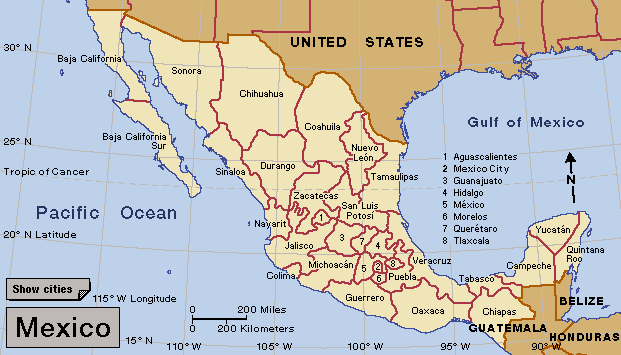Puebla << PWEHB luh or pyoo EHB luh >> is a mountainous state in east-central Mexico. It lies between Mexico City and the Gulf of Mexico. Puebla covers 13,090 square miles (33,902 square kilometers). At the time of the 2020 census, the population was 6,583,278. Mexico’s three highest mountains, all of which are volcanoes, stand on Puebla’s borders. Pico de Orizaba (also called Citlaltepetl), which is the tallest, rises 18,410 feet (5,610 meters). Popocatépetl and Ixtacihuatl are both more than 17,000 feet (5,180 meters) high.

Agriculture employs more workers than any other industry in Puebla. Farmers grow barley, corn, green peppers, peanuts, potatoes, rice, sugar cane, and wheat. However, the state is also a modern industrial center. Its factories produce automobiles and other manufactured goods for domestic and international markets.
The Great Pyramid, the largest pyramid in Mesoamerica (Mexico and Central America), stands near the city of Cholula. Built between about 300 B.C. and A.D. 700, it was a religious center of the Toltec and Aztec Indians. It consists of several structures stacked on top of one another and connected by stairways and tunnels.

The city of Puebla is the state capital and one of Mexico’s largest cities. The Spanish founded the city in 1531, and it still contains many beautiful colonial buildings. Distinctive ceramic tiles produced in Puebla decorate many of its buildings and are sold internationally. The Mexican holiday known as Cinco de Mayo celebrates the defeat of a French army at Puebla on May 5, 1862.
See also the World Book article on the city of Puebla.
